Reemplazo de baterías de plomo-ácido por baterías de litio en scooters de movilidad
Los scooters de movilidad han transformado la vida de muchas personas, brindando a las personas con movilidad reducida la libertad de moverse con independencia. Sin embargo, uno de los componentes más cruciales de estos scooters, la batería, a menudo se convierte en un factor limitante. Si has estado usando una batería de plomo-ácido y te preguntas si cambiar a una batería de litio podría ser una mejor opción, la respuesta corta es sí, y este blog explorará exactamente por qué. La palabra clave " batería" juega un papel crucial aquí, ya que este cambio puede afectar todo, desde el peso hasta el tiempo de carga y la vida útil.
- La importancia de elegir la batería adecuada para su scooter de movilidad
- Conceptos básicos de las baterías de plomo-ácido
- ¿Qué hace que la tecnología de las baterías de litio sea superior?
- Proceso de reemplazo de batería para scooters de movilidad
- Preocupaciones sobre la seguridad de la batería al actualizarla
- Comparación de la vida útil de las baterías: plomo-ácido vs. litio
- Consejos de mantenimiento de la batería para propietarios de scooters de movilidad
- Impacto ambiental del cambio de tipos de baterías
- Qué esperar después de actualizar su batería
- Cómo elegir la marca de batería de litio adecuada
- Reflexiones finales sobre las actualizaciones de baterías de los scooters de movilidad
La importancia de elegir la batería adecuada para su scooter de movilidad
Por qué la batería adecuada es importante para el rendimiento
Elegir la batería correcta para su scooter de movilidad no se trata solo de compatibilidad. Se trata de optimizar el rendimiento, la seguridad y la comodidad. La batería es lo que alimenta el motor y los controles de su scooter, lo que significa que su calidad influye directamente en la autonomía, la velocidad y la fiabilidad. Una batería de mala calidad o desactualizada puede provocar viajes más cortos, movimientos más lentos y frecuentes problemas de mantenimiento.
Comprensión de la compatibilidad de las baterías
Antes de reemplazar la batería de su scooter de movilidad, es fundamental comprender el tipo, el voltaje y la capacidad que requiere. La mayoría de los scooters diseñados antes de 2020 incluían baterías de plomo-ácido, pero eso no significa que sean la única opción. Con los ajustes o reemplazos adecuados del cargador y del sistema de gestión de la batería (BMS), una batería de litio puede funcionar eficazmente, a menudo superando su rendimiento original.
>>Vea también ¿Cuáles son los usos de las baterías de los grupos BCI 58 y 58R?
Conceptos básicos de las baterías de plomo-ácido
¿Qué es una batería de plomo-ácido?
Las baterías de plomo-ácido son la fuente de energía tradicional para muchos tipos de equipos de movilidad, como scooters y sillas de ruedas eléctricas. Consisten en placas de plomo sumergidas en un electrolito de ácido sulfúrico y son conocidas por su bajo costo y amplia disponibilidad.
Tipos de baterías de plomo-ácido
Hay tres tipos principales de baterías de plomo-ácido utilizadas en scooters de movilidad:
Baterías de plomo-ácido inundadas (FLA): requieren mantenimiento regular y controles de electrolitos.
Batería de plomo-ácido sellada (SLA): libre de mantenimiento y a prueba de derrames, a menudo utilizada en dispositivos de movilidad.
Estera de fibra de vidrio absorbente (AGM): una forma más avanzada de SLA, que ofrece mejor resistencia a las vibraciones y confiabilidad.
Limitaciones de las baterías de plomo-ácido en los scooters
Si bien las baterías de plomo-ácido son confiables, presentan varias desventajas:
Peso pesado: hace que sea más difícil transportar los scooters o levantarlos para introducirlos en vehículos.
Vida útil más corta: normalmente alrededor de 300 a 500 ciclos.
Tiempos de carga largos: a menudo se necesitan entre 8 y 12 horas para una carga completa.
Problemas de caída de voltaje: puede perder potencia bajo una carga pesada o cerca del final de la carga.
¿Qué hace que la tecnología de las baterías de litio sea superior?
Cómo funcionan las baterías de litio
Las baterías de litio utilizan fosfato de hierro y litio (LiFePO₄) o compuestos químicos similares que ofrecen una densidad energética mucho mayor. Esto se traduce en mayor potencia en un paquete más pequeño y ligero. Además, incorporan un sistema de gestión de baterías (BMS) para gestionar la carga y descarga de forma segura, mejorando así la eficiencia y la longevidad.
Ventajas de las baterías de litio en los scooters de movilidad
Ciclo de vida más largo: hasta 2000–3000 ciclos de carga.
Ligero: generalmente entre un 40 y un 60 % más liviano que sus equivalentes de plomo-ácido.
Carga más rápida: a menudo se carga por completo en 2 a 4 horas.
Salida de potencia estable: rendimiento constante hasta que se agote la batería.
Bajo mantenimiento: no necesita rellenarse con agua ni realizar controles con ácido.
Ecológico: material menos dañino y mayor vida útil que reduce el desperdicio.
Proceso de reemplazo de batería para scooters de movilidad
Descripción general paso a paso
Reemplazar una batería de plomo-ácido por una de litio no es algo que se pueda hacer simplemente conectando y listo, pero con un poco de conocimiento técnico o ayuda profesional es totalmente factible.
Paso 1: Identificar las especificaciones actuales de la batería
Verifique el voltaje de su batería (normalmente 12 V o 24 V) y la capacidad de amperios-hora (Ah). Esto suele estar indicado en la carcasa de la batería o en el manual del scooter.
Paso 2: Elija una batería de litio adecuada
Seleccione una batería de litio con el mismo voltaje y una capacidad de Ah igual o ligeramente superior. Por ejemplo, si su configuración actual utiliza dos baterías de plomo-ácido de 12 V y 35 Ah en serie (para 24 V), necesitará una batería de litio de 24 V con una capacidad mínima de 35 Ah.
Paso 3: Considere el sistema de gestión de la batería (BMS)
Las baterías de litio requieren un sistema de gestión de baterías (BMS) para regular su uso seguro. La mayoría de las baterías de litio de calidad lo incluyen. Sin embargo, verifique las especificaciones para garantizar la compatibilidad con el motor y el controlador de su scooter.
Paso 4: Actualizar el cargador
Los cargadores de baterías de plomo-ácido funcionan de forma diferente a los de litio. Necesitará un cargador compatible con litio para garantizar una carga segura y eficiente de la batería.
Paso 5: Probar y monitorear
Tras la instalación, realice una prueba completa para supervisar el comportamiento de la batería en condiciones normales de uso. Asegúrese de que los niveles de voltaje se mantengan constantes y de que la batería no se sobrecaliente ni genere errores del sistema.
Preocupaciones sobre la seguridad de la batería al actualizarla
¿Son seguras las baterías de litio?
Sí, especialmente al usar fosfato de hierro y litio (LiFePO₄), que es térmicamente estable y menos propenso al sobrecalentamiento o la combustión. Las marcas reconocidas incluyen características de seguridad integradas, como:
Protección contra sobrecargas
Protección contra cortocircuitos
Protección térmica
Corte por sobredescarga
Una instalación adecuada previene riesgos
Asegúrese de que el cableado, las conexiones y la ventilación sean correctos. En caso de duda, consulte con un técnico de movilidad o un profesional en baterías para realizar la actualización de forma segura.
Comparación de la vida útil de las baterías: plomo-ácido vs. litio
Vida útil de la batería de plomo-ácido
Ciclos de carga: 300–500
Años de uso (diario): 1–2 años
Disminución del rendimiento: Perceptible a los pocos meses de uso intensivo
Vida útil de la batería de litio
Ciclos de carga: 2000–3000
Años de uso (diario): 5–8 años
Disminución del rendimiento: Mínimo hasta una etapa avanzada de la vida.
Costo a lo largo del tiempo
Si bien las baterías de litio tienen un costo inicial más alto, su costo total de vida útil es significativamente menor debido a la reducción de reemplazos y la eficiencia energética.
Consejos de mantenimiento de la batería para propietarios de scooters de movilidad
Mantenimiento de baterías de plomo-ácido
Verifique los niveles de electrolitos mensualmente (para tipos inundados)
Mantenga los terminales limpios y libres de corrosión.
Cargue completamente después de cada uso para evitar la sulfatación.
Conservar en un lugar fresco y seco.
Mantenimiento de la batería de litio
Evite la descarga completa por debajo del 10%
Utilice únicamente cargadores de litio compatibles
Cargar en un entorno con temperatura controlada
Almacenar con una carga del 40 al 60 % durante períodos prolongados
Almacenamiento estacional
Si guarda su scooter durante el invierno, retire la batería y guárdela en un lugar seco y bajo techo. Mantenga las baterías de litio parcialmente cargadas para prolongar su vida útil.
Impacto ambiental del cambio de tipos de baterías
Preocupaciones sobre la eliminación del ácido de plomo
Las baterías de plomo-ácido son tóxicas si se desechan incorrectamente. Contienen ácido sulfúrico y plomo, ambos peligrosos para el medio ambiente y la salud.
Reciclaje y sostenibilidad de baterías de litio
Las baterías de litio modernas están diseñadas para ser reciclables, y existen numerosos programas para reutilizar sus valiosos componentes. Además, al reducirse los reemplazos, se reducen los residuos en general.
>>Vea también ¿Qué batería tiene la vida útil más larga en una linterna?
Qué esperar después de actualizar su batería
Mejoras de rendimiento
Mejor autonomía por carga (a menudo 2x)
Par motor y velocidad máxima constantes
Carga más rápida = mayor tiempo de actividad
Ejemplo del mundo real
Un usuario que actualizó sus baterías de plomo-ácido de 12 V y 35 Ah a un solo paquete de litio de 24 V y 40 Ah informó:
reducción de peso del 40%
Carga de 3 a 4 veces más rápida
No hay caída de potencia cerca del final de la carga
Satisfacción del usuario
La mayoría de los usuarios de scooters de movilidad que cambian a baterías de litio informan una mejor experiencia general, menos preocupaciones por la carga y una mayor independencia.
Cómo elegir la marca de batería de litio adecuada
Qué buscar
BMS integrado con funciones de protección
Certificación UL o CE
Especificaciones y garantías claras (mínimo 2-3 años)
Disponibilidad de soporte y documentación
Marcas recomendadas
Baterías Battle Born
Relion
OEM basados en EVE o CATL
Eco-worthy o Ampere Time (para usuarios con presupuesto limitado)
Evite las importaciones de baja calidad
Las baterías de litio baratas sin certificaciones de seguridad ni sistemas BMS adecuados pueden suponer graves riesgos. Elija siempre un proveedor de confianza.
Reflexiones finales sobre las actualizaciones de baterías de los scooters de movilidad
Cambiar una batería de plomo-ácido por una de litio en un scooter de movilidad puede parecer un cambio importante, pero conlleva importantes beneficios. Desde un mejor rendimiento y reducción de peso hasta ahorros a largo plazo y respeto al medio ambiente, las baterías de litio son una mejora de futuro para los usuarios de dispositivos de movilidad.
Claro que, como cualquier solución de energía, requieren cierta planificación, incluyendo actualizaciones del cargador y consideraciones de seguridad. Pero con una configuración adecuada y un proveedor de litio de confianza, los resultados pueden ser transformadores. Ya seas cuidador, usuario de scooter o revendedor, conocer los pormenores de las opciones de batería te da una ventaja para tomar decisiones más inteligentes y duraderas.

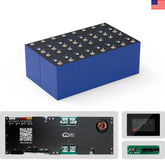



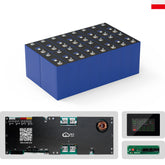

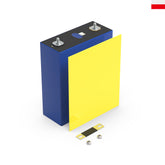

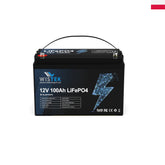
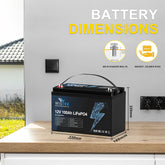


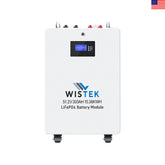
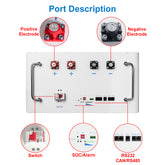
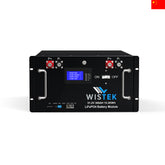
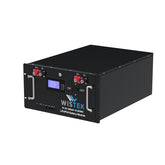


Leave a comment
All blog comments are checked prior to publishing